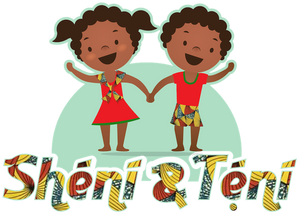SHORT STORIES FOR THE NIGERIA PUZZLE
IGBO
Chioma and Emeka are returning from their small farm. Chioma has picked some oji (kolanut) and anara (garden egg) which she will sell in the market. They both love to eat their anara with ose oji (peanut butter sauce).
Emeka is wearing his okpu agbala, his favourite hat and has some mmanya ocha (palm wine, the local drink) in his blue bottle.
Chioma has on some lovely beads called aka, and her ogodo (wrapper). When they get home, they will prepare dinner and get ready to go to the market early the next morning.
___________
Chioma et Emeka reviennent de leur petite ferme. Chioma a cueilli des oji (noix de kola) et
des anara (œufs de jardin) qu'elle vendra au marché. Ils adorent tous les deux manger leur
anara avec de l'ose oji (sauce au beurre de cacahuète).
Emeka porte son okpu agbala, son chapeau préféré et a du mmanya ocha (vin de palme, la
boisson locale) dans sa bouteille bleue.
Chioma porte de jolies perles appelées aka et son ogodo (emballage). De retour à la maison,
ils préparent le dîner et se préparent à aller au marché tôt le lendemain matin.
YORUBA
Femi is on his mummy’s back. Baba Femi (Femi’s dad) and Mama Femi (Femi’s mum) have just returned from a party. Femi is very happy because his mum and dad are dancing and playing music.
Baba Femi is beating a drum. It is called gangan or “talking drum”. Mama Femi is holding a sekere – also a musical instrument. They are both wearing a tie and dye fabric pattern which the Yorubas are well known for. Look at Baba Femi’s hat – it looks like it has ears. It is called fila ab’eti-aja. Baba Femi is also wearing an agbada (tunic) and sokoto (trousers).
Mama Femi has a gele (headgear) on her head and is wearing iro (wrapper) and buba (blouse).
______________
Femi est sur le dos de sa maman. Baba Femi (le père de Femi) et Mama Femi (la mère de Femi) viennent de rentrer d'une fête. Femi est très heureux parce que sa maman et son papa dansent et jouent de la musique.
Baba Femi bat un tambour. On l'appelle gangan ou "tambour parlant". Mama Femi tient un sekere - également un instrument de musique. Ils portent tous les deux un motif de tissu tie and dye pour lequel les Yorubas sont bien connus. Regardez le chapeau de Baba Femi - on dirait qu'il a des oreilles. Cela s'appelle fila ab'eti-aja. Baba Femi porte également une agbada (tunique) et un sokoto (pantalon).
Mama Femi a un gele (couvre-chef) sur la tête et porte un iro (wrapper) et un buba (chemisier).
FULANI
Fatima and Musa are in the village. Fatima is returning from the river after fetching some water. Musa has his cows with him. He is on the way to the river to get some water to give the cows to drink. Look at the pole and bucket on his shoulders.
Fatima and Musa are wearing their traditional attire. Fatima has on a riga (blouse) and zani (wrapper) and she is holding her kwarya (calabash) on her head – the easiest way to carry it.
Musa’s outfit consists of his baban riga (tunic), wando (trousers) and tagelmust (headwrap).
_______________
Fatima et Musa sont au village. Fatima revient de la rivière après avoir été chercher de l'eau. Musa a ses vaches avec lui. Il est en route vers la rivière pour aller chercher de l'eau pour abreuver les vaches. Regardez le poteau et le seau sur ses épaules.
Fatima et Musa portent leur tenue traditionnelle. Fatima porte un riga (chemisier) et un zani (emballage) et elle tient son kwarya (calebasse) sur sa tête - la façon la plus simple de le porter.
La tenue de Musa se compose de son baban riga (tunique), wando (pantalon) et tagelmust (bandeau).
Note: please allow for variations in dialects
